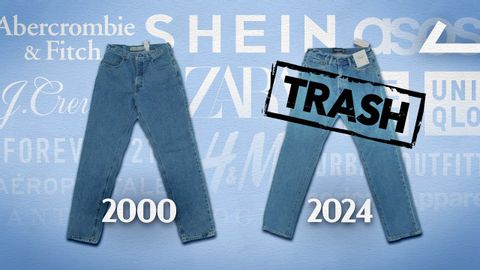シェインだけじゃない:なぜ今、あなたの服はすべて劣化しているのか? (It's Not Just Shein: Why Are ALL Your Clothes Worse Now?)
VoiceTube が 2024 年 07 月 15 日 に投稿  この条件に一致する単語はありません
この条件に一致する単語はありませんUS /ˈstrʌɡəl/
・
UK /'strʌɡl/
- v.t./i.奮闘する;もみ合う
- n. (c./u.)奮闘;苦闘
US /fɔrs, fors/
・
UK /fɔ:s/
- n.軍隊;力;強制;武力;影響力;勢い;警察
- v.t.強要する;こじ開ける;促成栽培する
US /ˈɪndəstri/
・
UK /'ɪndəstrɪ/
エネルギーを使用
すべての単語を解除
発音・解説・フィルター機能を解除
